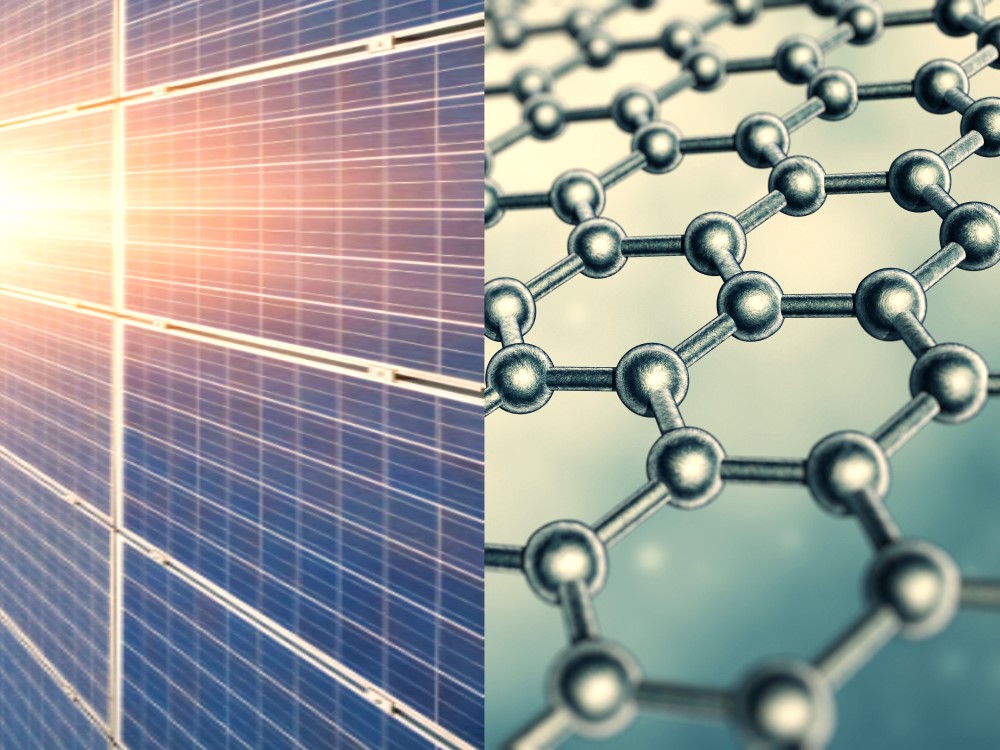-
Graphene and Its Uses in Organic Solar Cells
Mar 15, 2020 | ACS MATERIAL LLCIn a world that’s increasingly run on electronics, finding inexpensive, renewable energy that’s also versatile and portable has become the number one priority for researchers near and far. One of the most obvious sources for low-cost, abundant energy is, of course, the sun, but converting the sun’s energy into usable electricity efficiently and inexpensively has proven to be a challenge. And, while it’s true that solar power technology is advancing at a rapid pace, it’s still difficult to imagine using the sun exclusively to power portable electronic devices such as phones, tablets, and computers.
Graphene may be the material that brings that dream to reality. Graphene is a 2-dimensional allotrope of carbon consisting of a single layer of carbon molecules joined together in a tight hexagonal lattice. It is strong, flexible, lightweight, nearly transparent, and is an extraordinary conductor of electricity. Graphene is made exclusively of carbon, an element which is, quite literally, everywhere. Graphene’s remarkable characteristics have put it in the center of cutting-edge solar research.
Solar Cells: The Basics

To understand how graphene might completely transform the face of solar power, it’s a good idea to consider first the basics of solar power. The sun’s light and heat are simply two different forms of energy. Solar cells, also called photovoltaic (PV) cells, capture the energy from the sun’s light and convert it directly into electricity via the physical and chemical phenomenon called the photovoltaic effect.
PV cells perform three basic functions:
- The cells absorb light, which knock electrons loose from the semiconducting material
- The loose electrons flow, creating a current
- The current is captured and transported to an external circuit
Traditional solar cells are crystalline, meaning that the semiconductor material in the cell’s electrodes is made from a crystalline subject, most commonly silicon. If you’re imagining banks of large, heavy, opaque, rectangular solar panels on a roof or in a solar farm, then you’re imagining crystalline solar cells. With that image in mind, it’s not hard to presume the limits of these devices.
Organic Photovoltaics (OPVs)
Organic solar cells use electrodes made of molecular or polymeric materials rather than metals to absorb and transport the energy from outdoor and indoor light. Organic cells are also alternatively called organic photovoltaics (OPVs), plastic solar cells, or polymer solar cells. OPV electrodes are typically made by dissolving organic compounds into ink and then printing them onto thin plastics, resulting in a thin solar cell. The organic materials used to make OPVs are less expensive and more abundant than metals like silicon use in traditional cells. They are also renewable, potentially disposable, and have less of an environmental impact than crystalline cells. The question is: Can OPVs also be transparent and flexible?
Graphene Polymer OPVs
Finding organic materials that conduct electricity and that are visually transparent is no easy task. One such material is indium tin oxide (ITO). ITO has been used successfully in OPVs; it’s transparent and a good conductor, but it’s also quite expensive and very brittle, making it an impractical solution for wide-scale OPV applications.
The alternative is thus: graphene. Graphene is conductive, flexible, stronger than steel, and almost totally transparent; a graphene solar electrode can be as thin as 1 nm, a mere fraction of the size of an ITO electrode. Plus, graphene is pure carbon, a totally renewable, ecologically sound resource.
Thin, lightweight, transparent solar cells made from graphene open a world of possibilities, including:
- Portable electronic screens could actually be solar cells, allowing the devices to charge themselves while out in the light.
- Windows on the sunny sides of buildings could be solar panels.
- Car windows and sunroofs could be solar panels and charge the car while driving.
- OPVs could be integrated into clothing or personal accessories; purses, backpacks, T-shirts, and leggings might actually wirelessly charge phones, watches, tablets, and more.
- Structures that are currently not built to support the weight of traditional solar panels could be outfitted with OPVs.
- Inexpensive OPVs could make electricity available to millions of people around the world who don’t currently have access to traditional power grids or the resources to invest in expensive crystalline solar panels.
Challenges
While graphene seems like a dream solution, it’s not without its challenges. Two key problems need to be overcome before graphene-based OPVs become a reality. The first problem involves depositing the graphene layer onto the surface of the top electrode in the cell. Depositing graphene requires some combination of water, heat, and solvents, all of which can damage the sensitive hole-transport layer of the cell. The second problem is that an OPV requires two layers – electrodes—of semiconductive material, each of which must play a different role. If both layers are made from graphene, it’s difficult to get one electrode to behave differently than the other. If only one electrode is made from graphene, the function of the resulting OPV will be checked by the limitations of the secondary material.
ACS Material is a leading graphene supplier to researchers around the world who are studying ways to overcome these challenges and create graphene OPVs that will change the world.